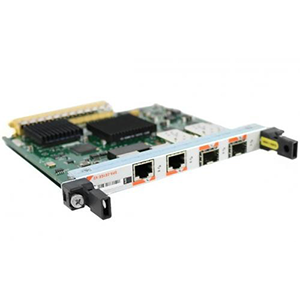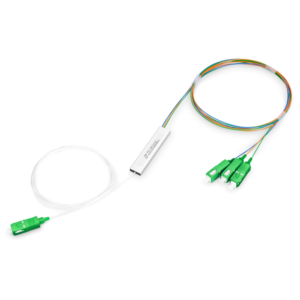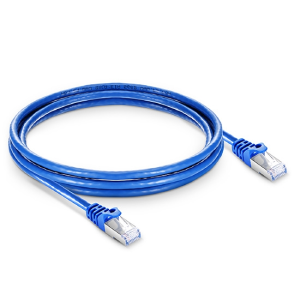High-speed fiber interconnection undoubtedly plays an important role in data center networks. This article will focus on the relevant content of SFP28 fiber optic cables. We will first define the technical specifications and physical characteristics of SFP28 fiber optic cables and explain their improvements over traditional SFP cables. Next, we will explain the advantages of SFP28 fiber optic cables in terms of bandwidth, low power consumption, etc., and analyze their key role in high-speed interconnection.
We will introduce the internal components of SFP28 fiber optic cables and explain how the hardware design supports high-speed transmission performance. In addition, we will list typical network environments suitable for deploying SFP28 fiber optic cables and analyze their advantages and technical requirements in different applications. Finally, we will provide key considerations for purchasing SFP28 fiber optic cables and describe their correct installation and commissioning steps.
Basic concepts of SFP28 fiber optic cables
Let me introduce you to the basic concepts of SFP28 fiber optic cables in detail.
Technical specifications and physical characteristics of SFP28 fiber optic cable:
(1) Technical specifications
- SFP28 is an upgraded standard based on the traditional SFP fiber optic cable.
- Mainly supports high-speed fiber optic transmission of 25Gbps, 50Gbps and 100Gbps.
- The working wavelength is generally in the common optical network segments of 850nm, 1310nm and 1550nm.
(2) Physical characteristics
- SFP28 fiber optic cable adopts a miniaturized SFP (Small Form-Factor Pluggable) interface.
- It has a small size, which is convenient for plugging and unplugging optical modules and wiring management.
- The cable wire adopts single-mode or multi-mode optical fiber to connect optical modules.
(3) Main parameters
- The maximum transmission distance supported ranges from 10 meters to 40 km, depending on the type of optical fiber.
- Parameters such as optical power, dispersion and signal-to-noise ratio must meet the corresponding technical standards.
- Durability, reliability and compatibility are also the focus of SFP28 cable design.
Improvements of the SFP28 standard compared to traditional SFP optical fiber cables:
(1) Transmission rate
- SFP28 can support higher rates such as 25Gbps, 50Gbps and 100Gbps.
- Compared to SFP cables that only support lower rates such as 1Gbps and 10Gbps, it has been significantly improved.
(2) Interface size
- SFP28 maintains the advantages of SFP miniaturization interface and is more compact.
- It is conducive to improving rack space utilization and wiring flexibility.
(3) Energy consumption control
- SFP28 cable can also better control power consumption under high-speed transmission.
- Compared with traditional SFP cables, energy consumption is more optimized in high-speed applications.
(4) Compatibility
- SFP28 standard is compatible with historical interface specifications such as SFP and SFP+.
- It can achieve seamless connection with old equipment and support smooth upgrade and transformation.
(5) Test verification
- SFP28 cables and their optical modules are subject to more stringent testing and certification.
- Quality and reliability are further guaranteed compared to SFP cables.
In short, SFP28 draws on the advantages of SFP and has significant improvements in high-speed transmission, miniaturization and energy consumption control, making it more suitable for future high-speed optical network applications.
Technical characteristics of SFP28 optical fiber cable
Let me introduce the technical characteristics of SFP28 optical fiber cable in detail.
Advantages of SFP28 optical fiber cable in bandwidth, low power consumption, etc.:
(1) Ultra-high bandwidth
- SFP28 optical fiber cable can support ultra-high transmission bandwidth up to 100Gbps.
- Compared with the traditional 1/10GbE interface, the bandwidth has been increased by more than 10 times.
- It can meet the continuous growth demand for bandwidth in future high-speed optical networks.
(2) Low power design
- The power consumption of SFP28 optical modules and cables is controlled within the range of 2-5W.
- By optimizing circuits and thermal management, low power operation can be achieved under high-speed transmission.
- It is conducive to reducing the overall energy consumption and heat dissipation load of network equipment.
(3) Miniaturized size
- SFP28 adopts miniaturized optical modules and interface design, which is easy to deploy and manage.
- The compact size can improve the utilization of rack space.
- It is more suitable for space-constrained application scenarios.
(4) Reliability and compatibility
- SFP28 fiber optic cable has been rigorously tested and verified to have good reliability.
- Backward compatible with historical standards such as SFP/SFP+, facilitating network upgrades and transformations.
- Seamless docking and smooth transition with existing equipment can be achieved.
The key role of SFP28 technology in high-speed interconnection:
(1) Supporting high-bandwidth applications
- Ultra-high-speed Ethernet such as 100GbE and 400GbE all rely on SFP28 technology.
- Its ultra-high transmission bandwidth can meet bandwidth-intensive applications such as cloud computing and video.
(2) Improve interconnection efficiency
- The compact size of SFP28 helps to increase the port density of equipment.
- It helps to simplify the wiring architecture and improve the space utilization of the computer room and network equipment.
(3) Enhance network scalability
- SFP28 has strong reliability and low power consumption, which is conducive to supporting the deployment of large-scale networks.
- It is convenient to smoothly upgrade and expand the network according to needs.
(4) Reduce operating costs
- SFP28 cables are more economical and efficient in installation, energy consumption and maintenance.
- It helps to reduce the overall cost of network construction and operation.
In short, SFP28 technology plays a key role in high-speed Internet networks and is an indispensable key support for meeting future network needs.
Hardware structure of SFP28 fiber optic cable
Let me introduce in detail the hardware structure of SFP28 fiber optic cable and how it supports high-speed transmission performance.
Internal components of SFP28 fiber optic cable:
(1) Fiber core
- SFP28 cable uses single-mode or multi-mode fiber core as the transmission medium.
- Parameters such as fiber type, core diameter and cladding diameter will affect transmission performance.
(2) Optical module
- There is an optical module at each end of the SFP28 cable to connect the optical fiber and electrical interface.
- The optical module contains components such as optical transmitter, optical receiver, and driving circuit.
(3) Fiber Optic Connector
- Standard fiber optic connectors such as LC or SC are used at both ends of the SFP28 cable.
- Ensure the reliable connection between the optical fiber and the optical module and the stable transmission of the optical signal.
(4) Electrical Interface
- One end of the SFP28 optical module has an electrical interface for connecting to the device motherboard.
- Usually, a miniaturized electrical connector of the SFP28 standard is used.
(5) Shielding Structure
- The SFP28 cable and optical module have a good shielding design to reduce electromagnetic interference.
- Ensure the integrity and reliability of the signal during high-speed transmission.
How does SFP28 hardware design support high-speed transmission performance:
(1) Fiber design
- Using low-dispersion, low-loss optical fiber can maximize the transmission bandwidth.
- The docking accuracy of the optical fiber connector also affects the quality of the optical signal.
(2) Optical module design
- Optimize the speed, power and sensitivity of the optical transmitter and receiver.
- Equipped with a high-performance driving circuit to ensure efficient and stable photoelectric conversion.
(3) Electrical interface
- The SFP28 electrical interface uses high-speed serial interface technology to support 100G transmission.
- The wiring and impedance matching of the signal path are carefully designed.
(4) Electromagnetic shielding
- Comprehensive shielding measures effectively isolate external electromagnetic interference.
- Ensure that high-speed signals are not affected by interference during transmission.
(5) Heat management
- Optimize heat dissipation design to ensure that optical modules and circuits will not overheat at high speeds.
- It is conducive to improving the reliability and service life of SFP28 cables.
In short, the internal hardware structure of SFP28 cables has been precisely designed, and all aspects from photoelectric conversion to signal transmission have been optimized for high-speed applications.
Application scenarios of SFP28 fiber optic cables
Let me introduce you to the typical application scenarios and advantages of SFP28 fiber optic cables.
Typical network environments suitable for deploying SFP28 fiber optic cables:
(1) Data center
- Data centers have very high requirements for network bandwidth and transmission rate.
- SFP28 fiber optic cables can provide ultra-high transmission speeds of 100Gbps, which is very suitable.
(2) Enterprise backbone network
- High-speed Internet within an enterprise requires reliable high-bandwidth connections.
- SFP28 fiber optic cables can meet the bandwidth expansion requirements of enterprise backbone networks.
(3) Education and scientific research networks
- Colleges and scientific research institutions have extremely high requirements for network throughput.
- SFP28 fiber optic cables can effectively support large-capacity data transmission.
(4) Telecom operator network
- Telecom operators’ backbone networks require ultra-high-speed interconnection technology support.
- SFP28 fiber optic cable is a key support for emerging applications such as 5G and cloud computing.
(5) Industrial automation
- Industrial control systems have high requirements for network real-time performance and reliability.
- SFP28 fiber optic cable can provide ultra-low latency and high anti-interference transmission.
SFP28’s advantages and technical requirements in different applications:
(1) High bandwidth
- SFP28 can provide an ultra-high transmission rate of 100Gbps.
- It meets the urgent bandwidth needs of applications such as data centers and backbone networks.
(2) Low latency
- SFP28 optical modules and cables can provide extremely low signal transmission latency.
- Applicable to applications with strict real-time requirements such as industrial automation.
(3) Anti-interference
- SFP28 cables adopt good shielding design and have strong anti-electromagnetic interference capabilities.
- Applicable to industrial environments that are easily affected by interference, such as factories and power plants.
(4) Reliability
- SFP28 cables and optical modules have been strictly tested and certified.
- Can provide reliable support for key infrastructure such as telecommunications backbone networks.
(5) Scalability
- The SFP28 standard is backward compatible with historical interfaces such as SFP/SFP+.
- It is conducive to the smooth upgrade and expansion of existing networks.
It should be noted that when deploying SFP28 fiber optic cables, many factors such as optical module model, fiber type, transmission distance, etc. need to be considered to meet the specific needs of different application scenarios.
SFP28 fiber optic cable selection and deployment
Let me give you a detailed introduction to the selection and deployment of SFP28 fiber optic cable precautions.
Key considerations for purchasing SFP28 fiber optic cable:
(1) Transmission rate
- Choose 25G, 50G or 100G SFP28 cables according to actual application requirements.
- Ensure that the transmission rate of the cable can meet the performance requirements of the network equipment.
(2) Fiber type
- Single-mode fiber and multi-mode fiber have different characteristics and different transmission distances.
- The appropriate fiber type needs to be selected according to the actual deployment environment.
(3) Transmission distance
- The maximum transmission distance of SFP28 cables under different optical fibers varies.
- When purchasing, ensure that the transmission distance of the cable can meet the actual network environment.
(4) Connector type
- The connectors at both ends of the SFP28 cable are generally LC or SC standard interfaces.
- Make sure that they match the interface type of the device optical module.
(5) Environmental adaptability
- Consider factors such as temperature, humidity, and vibration in the deployment environment.
- Select SFP28 cable models with good environmental adaptability.
(6) Certification standards
- Select SFP28 cables that comply with relevant standards to ensure reliable quality.
- Such as the certification requirements of IEEE 802.3by, SFF-8402 and other standards.
Correct installation and debugging steps for SFP28 optical fiber cable:
(1) Installation preparation
- Check whether the SFP28 cable and the interface of the connected device match correctly.
- Ensure that the working environment meets the cable usage requirements.
(2) Connection and installation
- Carefully insert the SFP28 optical module into the SFP28 interface slot of the device.
- Ensure that the optical module and the interface are fully engaged and fixed with a lock.
(3) Optical fiber connection
- Match the optical fiber connector with the optical fiber interface of the optical module until it is fully inserted.
- Be careful not to touch the front end of the optical fiber during docking to avoid damage.
(4) Power-on check
- After powering on, observe the status indicators on the device and optical module.
- Confirm that the optical module and optical fiber connection status are normal and there is no alarm.
(5) Performance test
- Use a professional tester to verify the transmission rate, power and other parameters of the SFP28 link.
- Ensure that all performance indicators meet the application requirements.
(6) Long-term monitoring
- Regularly check the optical fiber connection to ensure that it is good and stable.
- Continuously monitor the link performance to detect and resolve abnormal situations in a timely manner.
In short, the installation of SFP28 optical fiber cables requires careful operation, and attention should be paid to subsequent performance verification and monitoring and maintenance work.
Summary
Reasonable deployment of SFP28 fiber optic cables can effectively support the high-speed interconnection needs of data center networks. Our company has long been focusing on the research and development and production of optical communication equipment and its supporting products, and has rich industry experience. Our SFP28 fiber optic cable products have reached the industry-leading level in terms of bandwidth and reliability, and can meet your demanding needs for high-speed Internet network construction.
Whether you need to deploy SFP28 fiber optic cables at the server access layer, aggregation layer, or core layer, we can provide you with customized solutions. At the same time, our professional team will provide you with a full range of technical support, including on-site surveys, solution design, and equipment installation and maintenance. Contact us now to learn more about SFP28 fiber optic cables.
SFP28 Optical Fiber Cable FAQ
SFP28 is a newer, higher-speed version of the small form-factor pluggable (SFP) transceiver standard, capable of supporting data rates up to 25 Gigabits per second (Gbps).
An SFP28 fiber optic cable is a specialized cable designed to work with SFP28 transceivers, typically used for high-speed Ethernet or Fibre Channel connections.
SFP28 cables are optimized for 25 Gbps data rates and have a smaller form factor compared to traditional fiber optic cables, making them suitable for high-density networking applications.
SFP28 fiber optic cables are available in single-mode and multimode varieties, with various connector types, such as LC, SC, and MPO.
SFP28 cables must comply with standards like IEEE 802.3by for 25 Gigabit Ethernet and maintain strict specifications for parameters like optical power, insertion loss, and return loss.
Careful handling and cleaning of the fiber optic connectors are essential, as well as ensuring the fiber type (single-mode or multimode) is compatible with the SFP28 transceivers.
SFP28 fiber optic cables are primarily used in high-speed data center, enterprise, and service provider networks, supporting applications like 25 GbE, Fibre Channel, and InfiniBand.
Key advantages include higher data rates, reduced physical footprint, and better support for high-density network architectures.
It’s important to ensure that the SFP28 cables and transceivers are compatible with the specific networking equipment and standards supported in the target environment.
Ongoing advancements include the introduction of even higher-speed interfaces, such as QSFP28 and OSFP, as well as the integration of additional features like active optical cables and advanced diagnostic capabilities.




